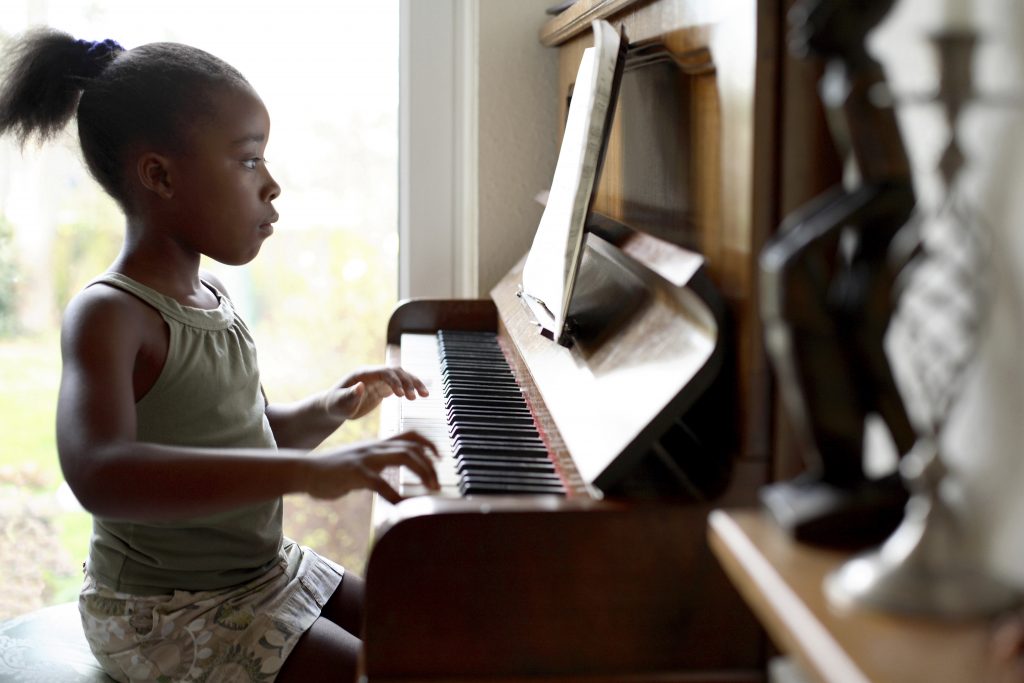
Before I taught elementary school, I taught piano lessons to a group of kids in my neighborhood. It was one of the most fulfilling jobs I’ve had—just like how learning the piano is one of the most fulfilling skills a child can gain.
Learning how to play an instrument has many benefits for children. In fact, a recent study shows that playing music from a young age encourages creativity, boosts self-esteem, and even helps kids improve their academic performance. The piano is an especially exciting instrument for kids to learn due to the vast array of playable music. From classical pieces by masters like Mozart and Beethoven to more contemporary tunes by Taylor Swift, the piano can do it all.
Which brings us to the most important question—where should your child begin? When introducing children to a new instrument, finding the right learning resources is crucial. After all, a well-designed series of piano books can help kids start tickling the ivories in no time.
So, without further ado, let’s take a look at some of the best piano books for children just getting started on their musical journey.
Piano Adventures
Nancy and Randall Faber
If you’re on the hunt for the best series of piano books for children, look no further than Piano Adventures.
This series by Nancy and Randall Faber features a well-structured and interesting curriculum that helps beginners find their fingering on the ebonies and ivories. The series begins with the Primer level, which teaches students the absolute basics. As students work through the lesson, performance, and theory books, they learn to play all sorts of melodies, including classical works by composers like Haydn and Saint-Saëns.
Piano Adventures is the series that my piano students used and they loved it. The colorful illustrations, simple explanations, and diverse musical genres featured in these piano books make them a great choice for any new student.
Alfred’s Basic Piano Library
Willard A. Palmer, Morton Manus, and Amanda Vick Lethco
Like Piano Adventures, Alfred’s Basic Piano Library is a fantastic series of piano books for new students. This series offers a structured and progressive approach to learning. Beginning students learn how to read music and position their hands in Level 1A, while more advanced students discover the secrets of music hidden in key signatures and grace notes.
Like many series of piano books, Alfred’s Basic Piano Library features a plethora of supplementary material, like theory and popular song books, that gives students a well-rounded education and a diverse repertoire of songs to explore.
Suzuki Piano School
Developed by Shinichi Suzuki
Let’s face it: reading music is difficult. Every child learns at a different rate, and sometimes learning to read notes makes the learning process more complicated than it needs to be.
Cue the Suzuki method!
The Suzuki method is one of the most famous and innovative ways to learn a new instrument. While most piano books for children focus on learning to read notes, the Suzuki Piano School series instead teaches students to play music by ear. This is accomplished by encouraging students to listen to a recording of each song in the book before they play it. After listening, the student then plays the song and imitates the recording as best they can. Shinichi Suzuki believed that just as kids learn their native language through listening and imitation, they can learn to play the piano by imitating a master.
The Suzuki Piano School series is the perfect choice for younger kids or older beginners.
Bastien Piano Basics
James Bastien
When I started learning piano, my teacher taught me using the Bastien Piano Basics series of piano books—and they worked wonders.
Like Piano Adventures and Alfred’s Basic Piano Library, this set of piano books for children features a step-by-step approach to learning. It begins with the Primer level for beginners and progresses through a series of levels of increasing difficulty. Each level builds upon the concepts and skills introduced in the previous one.
Like the Suzuki method, the Bastien Piano Basics series teaches kids how to hone their ear for music with accompaniment CDs in addition to reading notes. This offers kids a well-rounded and solid foundation in piano playing.
Note-Making for Piano
Notasium
Learning the piano can be complicated. Thankfully, books like Note-Making for Piano keep it simple.
This piano book focuses on helping kids remember which notes belong to which key on the keyboard by using colorful stickers. Each sticker is shaped like an animal whose name corresponds with a note. For example, the alligator sticker is placed on the A key, while the bear sticker is placed on the B key.
This method teaches kids to easily recognize which notes to play without the extra stress of reading music, making it the perfect choice for younger maestros.
The Best Books for Your Young Maestro
Learning to play an instrument is an exciting journey—and like all journeys, it demands high-quality equipment.
Choosing the right piano books for your child can make their educational adventure easy and enjoyable. The books mentioned above offer well-structured curriculums, engaging content, and a high variety of musical styles that keep kids engaged and excited about learning the piano. Who knows, your little Beethoven might even teach you a thing or two!
Just as the right piano books make a difference in your child’s musical journey, the right smartphone can make their online experience safer and more enjoyable. That’s why smartphones from Troomi Wireless are the best choice for your child. With customizable parental controls, optional Safelisting, and a high variety of apps and games that inspire and elevate, Troomi encourages kids to be their best selves as they explore their digital horizons. Click here to learn more!
